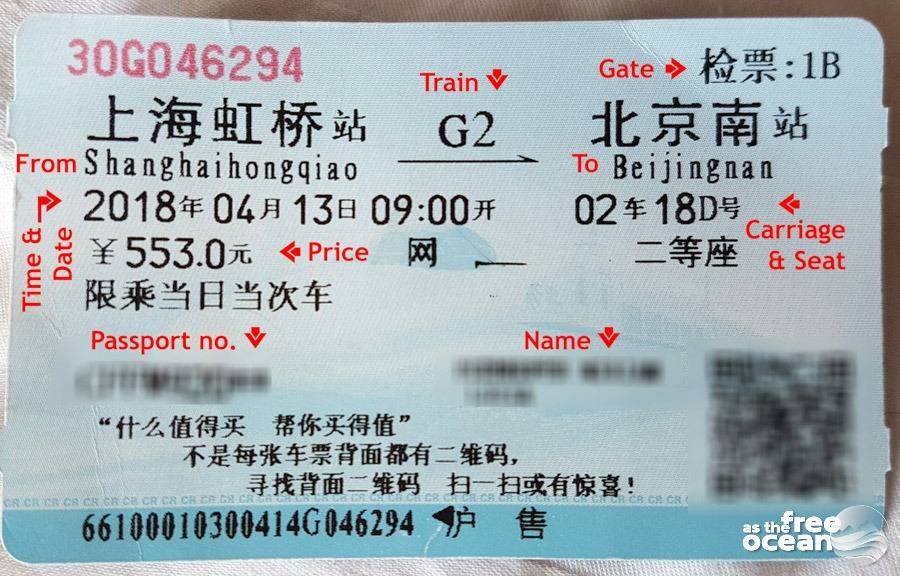One of our highlights in China was the visit at the National Park in Zhangjiajie. The 264 km2 park is located in the south of China, in the region of Hunan and holds several world records.
But before we arrived in Zhangjiajie, along with the excitement we also had to show a bit of patience, as we left Guilin by train (# D2945) and continued our journey to Liuzhou.
How to book train tickets in China?
As a foreign traveler, there are various ways to purchase tickets:
- The easiest way: you go to the station and buy your ticket at the ticket office. Tourists can not buy tickets at the vending machine, only at the ticket office by presenting a valid passport.
Disadvantage: As many people buy their tickets ahead of time, trains or preferred seats/classes can be already booked and who likes to spend several hours on a train standing?
- The other option is to reserve tickets on the Internet. For this purpose, we used the website: ctrip.com. Also here we had to provide a valid document. Once you have specified your departure station and destination, you get a list of trains from which you can choose.
Disadvantage: reservation fees are 3 euro per train and the original tickets must be picked up at any train station at the ticket office.

When booking trains you will come across the following terms:
Hard Seat: These are normal seats and not very comfortable on older trains, especially when many people travel with a lot of luggage. We would only recommend them on short distances or high-speed trains.
Hard Sleeper: Great for long journeys. Hard sleepers are bunk beds, mostly 3 on top of each other and 6 per compartment. “Compartment” is not the right term because the wagons have no doors. On the ticket, you can see which compartment you have and for the exact bed you need to check the online reservation (lower, middle or upper). Also, the crew will offer help if needed.

Soft Sleeper: (we did not use them in China) Same system as the Hard Sleepers but compartments have doors for a little more privacy and there are only 4 beds per compartment.
All trains have toilets (some trains are equipped also with Western toilets) and hot water. We usually took coffee or tea with us, as well as fruits or pastries before we got on the train. However, there is also the possibility to buy snacks or drinks on the train.

Are we at the airport?
Riding a train in China is almost like taking a plane. The stations are similar to airports. The controls are not as strict, but tickets and luggage are checked several times. Basically, these checks are all the same. Upon entering the station, tickets and ID are checked. Sometimes there is an extra counter for foreign documents. Then the baggage will be examined. Sometimes the ticket is checked twice before entering the tracks. The ticket must be well kept, as there is another control on arrival at the final station.
Information about tracks and entrances to the trains is partially printed on the ticket, otherwise you can see it on the information board.

From Guilin to Liuzhou
Upon our arrival in Liuzhou, we had to show improvisational skills, since the station from which our connecting train was leaving was situated in another district. Liuzhou is home to more than 3.5 million inhabitants and tourists are rarely seen here, therefore no words with familiar alphabet will be found.
Why didn’t we take the train from the same station?
Simple answer: There was none! The station in Liuzhou was being rebuilt so all long-distance trains were going from Liujiiang.
On the internet, we read that we could take buses 16, 27, 59, 68 and 90 to Liuzhou Railway Middle School and then change to bus no.10, which was going to Liujiiang. We have tried this version and have finally arrived at the destination, but it took quite a while to find the way. Nobody could speak English here and our offline translator also let us down.
Since our train left late in the evening, we decided to spend some time in the city center of Liuzhou, and later came across the easier way to get to Liujiiang.
The best way from Liuzhou station to Liujiiang with bus 99
If you leave Liuzhou Station, cross the road and wait for Bus 99, which will take you directly to Liujiiang. A ticket costs a few cents and the journey takes about 40 minutes.
Travel tip: In China, we always used the offline maps of Maps.me before we visited a city. (Google Apps are blocked here). We always use the maps to see if we are really going in the right direction.
The train from Liujiiang took us to Zhangjiajie, where we had a wonderful stay.
If you want to see photos of our time in China then click here?




